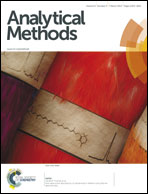Kinetics of hypotonic lysis of human erythrocytes
Abstract
The curve of osmotic stability of erythrocytes is based on the amount of lysis as a function of salt concentration under fixed time incubation and represents an equilibrium situation after a sufficiently long time, although lysis is a rapid process. The curve is valid for the analysis of modulating agents that have influence on this equilibrium, but not for those that have influence on the lysis kinetics. This work has developed experimental conditions to study the hemolysis kinetics based on the interruption of lysis by hypertonicity at predetermined intervals of time. These conditions were used to evaluate the kinetics of hemolysis of 17 volunteers. The lysis curve as a function of time was statistically fitted to a hyperbola, using the analytical routine of the integrated kinetic model of Michaelis–Menten to determine the time required to promote lysis of half of the population of erythrocytes (t1/2) and the maximum absorbance (Amax) reached in the test. The results showed good variance among volunteers. The constant t1/2 was negatively correlated with total and LDL-cholesterol, and Amax, as it was expected, showed significant associations with hematological variables that are under the influence of hemoglobin levels. Stratification of the study population into two age groups (18–30 and 40–90 years old) showed that the t1/2 values were significantly lower in the older population. Although the study population has been small, the study showed that this kinetic approach of the erythrocyte lysis is very promising for analyzing the myriad of variables which have influence on the cell membrane.


 Please wait while we load your content...
Please wait while we load your content...